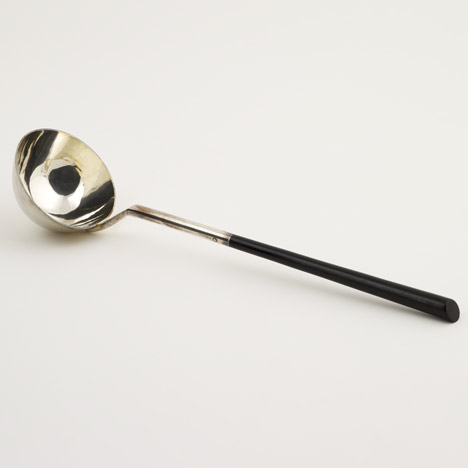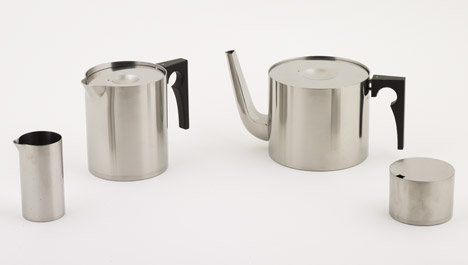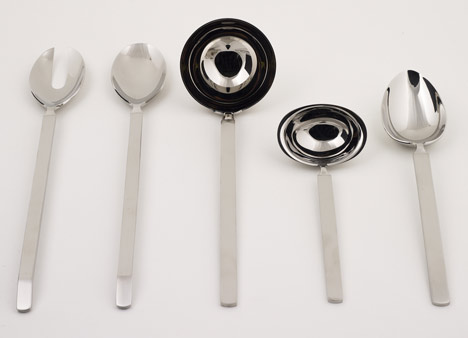Design Museum Collection App: kitchenware
In the next movie in our series of interviews we filmed for the Design Museum Collection App for iPad, Design Museum director Deyan Sudjic talks about iconic kitchenware products in their collection.
Sudjic focuses on Christopher Dresser's soup ladle, Arne Jacobsen’s Cylinda Line and Dry Flatware designed by Achille Castiglioni.
See all the movies filmed for the Design Museum Collection App »
Download the Design Museum Collection App »

Here are some excerpts from the app:
Soup ladle (above)
After a visit to Japan, as an official representative of the British Government, the designer Christopher Dresser changed his ideas about design. From being principally concerned with ornament, he decided that form was enough to entertain and please the eye. He now believed ornament can distract from, rather than enhance, form. Dresser’s 1879 soup ladle owes much to the simplicity and elegance of Japanese design.
Dresser worked at a time when designers aimed to raise the aesthetic standard of objects that surrounded people in their everyday life. These standards were considered to be low, mainly because of industrial production at the time. While many designers tried to return to pre-industrial styles of manufacturing, Dresser accepted modern industrial methods and pioneered new industrial techniques such as electroplating. However, although he designed goods that could, in theory, be made by machines, Dresser only used such technologies to realise a variety of effects. Despite its machined appearance, this soup ladle could only ever have been made by hand.

Cylinder Line (above)
Designed in 1967, Arne Jacobsen’s Cylinda Line series of tableware for Danish company Stelton is the last word in minimalism. Originally sketched on a napkin in 1964, it nonetheless took three years before the technology was sufficiently advanced to produce Jacobsen’s design. Jacobsen insisted on seamless tubes with perfect, brushed surfaces and originally envisaged using standard steel pipes. This proved too costly, so instead stainless steel sheets were bent and welded, then brushed in an industrial process that left no traces of welding.
Jacobsen’s partnership with Stelton, run by his stepson Peter Holmblad, continued until 1971. In this time, he added new pieces to the collection, including items such as a cocktail shaker, a martini mixer, an ice bucket with tongs and a serving tray. Based on differing variations of cylindrical shapes, the basic idea was to create a line of tableware where there would always be a correlation between individual items to create harmonious table settings.

Dry Flatware (above)
Dry Flatware, designed in 1982 by one of the most important industrial designers of the twentieth century, Achille Castiglioni was the first cutlery range produced by Alessi. Its innovative shape, and resolute style, along with extreme manageability and an excellent finish has kept the range as one of their best-selling products.